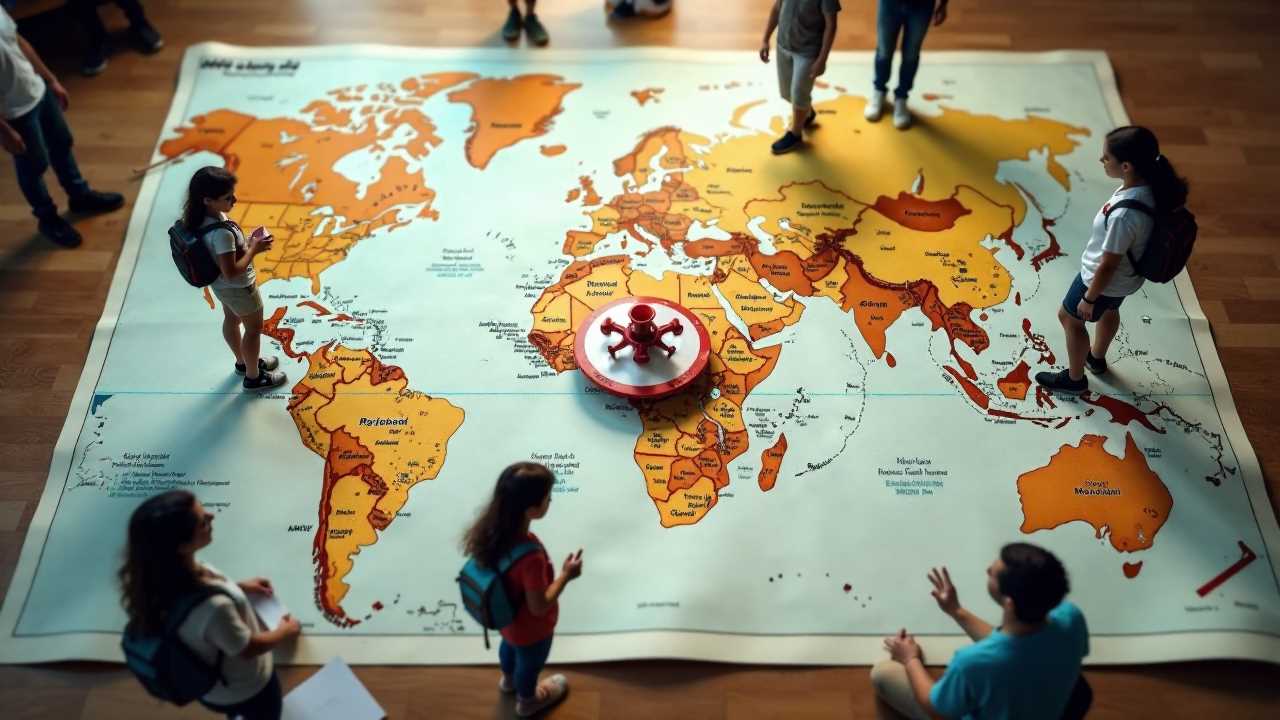
Introduction to Geography Learning Tools for Middle Grade Students
In today's educational landscape, geography learning tools for middle grade students play a pivotal role in shaping young minds. These tools not only foster an understanding of the world but also enhance skills such as cartography, mapping, and spatial awareness. As educators, we recognize the importance of integrating engaging resources that promote exploration and cultural studies into the curriculum. This article explores various effective geography learning tools that can ignite interest and curiosity among middle school students.
The Importance of Cartography in Geography Education
Cartography is the art and science of map-making, and it serves as a fundamental aspect of geography education. By introducing students to the principles of cartography, we enable them to understand how maps represent spatial information. Engaging with cartographic tools allows students to visualize geographical data, analyze patterns, and interpret information effectively.
Utilizing digital mapping tools, such as Google Earth and ArcGIS, can enhance students' learning experiences. These platforms provide interactive features that allow students to create their own maps, explore different terrains, and examine demographic data. By engaging with these tools, students develop critical thinking skills and gain a deeper appreciation for the complexities of our world.
Mapping Activities to Foster Spatial Awareness
Mapping activities are essential for developing spatial awareness among middle grade students. These activities encourage students to think critically about their surroundings and understand the relationships between different geographical elements. Incorporating hands-on mapping projects into the curriculum can significantly enhance students' learning experiences.
One effective mapping activity involves having students create a personal map of their neighborhood. This project encourages them to explore their local environment, identify landmarks, and understand how different locations relate to one another. By physically engaging with their surroundings, students develop a sense of place and spatial reasoning skills.
Another engaging activity is the use of interactive mapping games. These games often incorporate elements of competition and collaboration, making learning fun and engaging. For instance, students can participate in scavenger hunts that require them to use maps to locate specific landmarks or complete challenges related to geography. Such activities not only reinforce mapping skills but also promote teamwork and communication.
Exploration Through Geography Games
Geography games are an excellent way to make learning interactive and enjoyable for middle grade students. These games can range from online quizzes to board games that challenge students' knowledge of geographical facts and concepts. By incorporating games into the curriculum, we create a dynamic learning environment that encourages active participation.
Online platforms such as Kahoot and Quizlet offer interactive quizzes that allow students to test their knowledge of geography in a fun and engaging way. These tools can be customized to align with specific learning objectives, ensuring that students are not only entertained but also learning valuable information.
Board games like "Ticket to Ride" or "Where in the World?" can also be utilized to teach geography concepts. These games encourage strategic thinking and problem-solving while familiarizing students with geographical locations and cultural aspects of different regions. By integrating games into geography lessons, we foster a love for learning and exploration.
Integrating Cultural Studies into Geography Education
Cultural studies are an integral component of geography education, as they provide students with a broader understanding of the world and its diverse populations. By incorporating cultural studies into geography lessons, we help students appreciate the richness of different cultures and the impact of geography on societal development.
One effective method for integrating cultural studies is through project-based learning. Students can research a specific country or region, exploring its geography, history, and cultural practices. This research can culminate in presentations, allowing students to share their findings with their peers. Such projects not only enhance students' research and presentation skills but also promote cultural awareness and empathy.
Field trips to local cultural institutions, such as museums or cultural festivals, can further enrich students' understanding of cultural studies. These experiences provide real-world context and allow students to engage with diverse cultures firsthand. By connecting geography to cultural studies, we create a more holistic educational experience that prepares students for an increasingly interconnected world.
The Future of Geography Learning Tools
As we continue to develop and implement geography learning tools for middle grade students, it is essential to focus on creating engaging and interactive experiences. By emphasizing cartography, mapping, exploration, geography games, spatial awareness, and cultural studies, we can inspire a new generation of learners who are curious about the world around them.
The integration of technology and hands-on activities will ensure that geography education remains relevant and exciting. By fostering a love for geography, we equip students with the knowledge and skills necessary to navigate an increasingly complex global landscape. Together, we can ignite a passion for exploration and cultural understanding that will last a lifetime.
 Careers in EducationElementary EducationHigh School EducationEducational TechnologyTeaching StrategiesSpecial EducationPrivacy PolicyTerms And Conditions
Careers in EducationElementary EducationHigh School EducationEducational TechnologyTeaching StrategiesSpecial EducationPrivacy PolicyTerms And Conditions
